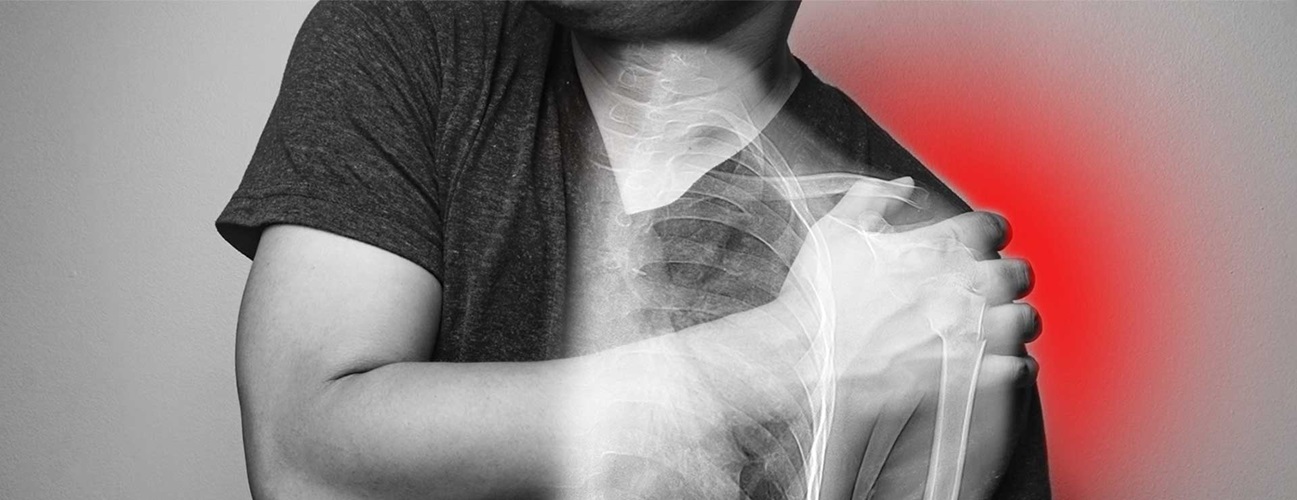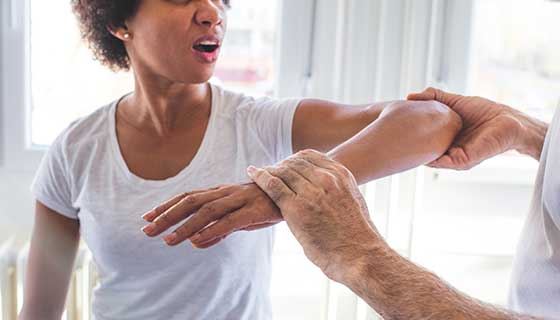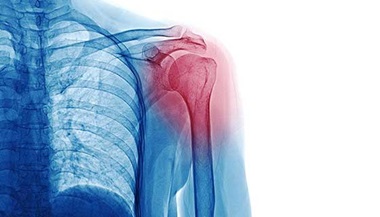Total Shoulder Replacement
Total shoulder replacement is a complex procedure that involves replacing the shoulder joint with artificial parts. Our shoulder specialists have performed numerous shoulder replacements at Johns Hopkins and appreciate an opportunity to share their knowledge. They have provided answers to some of the most frequently asked questions about the total shoulder replacement procedure. Call us to request an appointment with one of our shoulder surgeons if you have further questions about shoulder replacement.
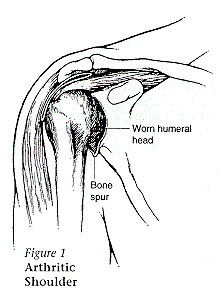
When is a shoulder replacement recommended?
The shoulder joint can be replaced by an artificial shoulder or shoulder replacement for pain caused by arthritis or when the shoulder is severely fractured or broken. Arthritis is when the cartilage on the ends of the bones is gone and there is bone rubbing on bone in the joint. Arthritis can be caused by fractures, rheumatoid disease, torn rotator cuff tendons or just by wear and tear over time (Figure 1).
What part of the shoulder is replaced?
The shoulder is a ball and socket joint (Figure 2). The ball is the upper part of the arm bone (humerus) and is called the humeral head. The socket is smaller and is part of the shoulder blade (scaptila). The ball is held in the socket by ligaments and by the rotator cuff tendons. The rotator cuff muscles start on the shoulder blade and turn into tendons which attach to the ball. In shoulder replacement surgery the ball is replaced with a metal ball attached to a stem (Figure 3).
The stem is inserted down the shaft of the humerus. Sometimes cement is utilized to keep the stem in place (Figure 4). The socket sometimes is replaced with a plastic piece which is usually fixed to a groove in the socket with cement. Whether a socket is used or not depends upon how bad the arthritis is in the shoulder and whether the rotator cuff tendons are intact.
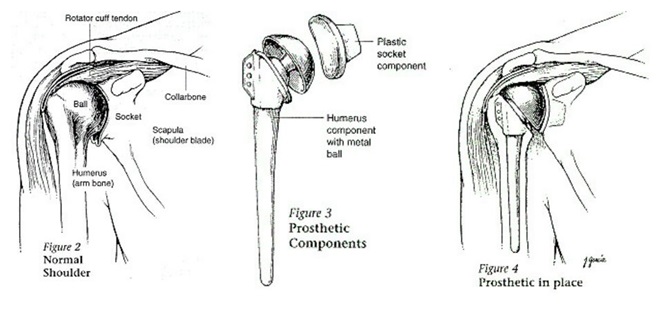
How long does total shoulder replacement surgery take?
The surgery takes about three hours including time for anesthesia to be done. Anesthesia is usually a general anesthetic although local anesthetic can be used to numb the whole arm. This is done by blocking the nerves as they come out of the neck (scalene block). Most patients must have medical clearance for surgery by their family doctor prior to surgery. All patients must give a unit of blood a few weeks before surgery which may be given back to them if needed after surgery.
What is the recovery like after total shoulder replacement surgery?
Most patients are given a morphine pump after surgery so they can control their own pain medicine. After a day or so most patients switch over to pain medicine by mouth. The arm will be in a brace but it can be taken off to do therapy. Antibiotics are given by vein for a day to prevent infection. Physical therapy begins the day after surgery and begins with moving the fingers, wrist and elbow. Some motion of the shoulder is begun within a day or so after surgery. The physical therapist will show the patient a program of exercises to do at home. Most patients stay in the hospital from three to five days.
What happens when I go home after having total shoulder replacement surgery?
The exercises are to be done at least daily to prevent stiffness. Cold therapy with cryocuffs or ice bags should be used to keep down pain. The incision can get wet in the shower but no baths are recommended for 3 weeks. The stitches are removed one week after surgery. Physical therapy at a physical therapy facility is begun seven to ten days after surgery and continues for several weeks. The doctor will see you in the office every few weeks for several months. Most patients cannot drive for four to six weeks.
What are the results of total shoulder replacement surgery?
Shoulder replacement surgery is very successful for pain relief. Most patients are very satisfied with the degree of pain relief. However, these shoulder replacements are not perfect and may ache a little when the weather changes or if you are too active.
Range of motion and function can be improved by this surgery but the amount of change is less predictable than pain relief. How much motion increases depends upon many factors, such as how long the motion has been lost and whether the rotator cuff tendons are intact and working.
Most patients are very satisfied with the results of their surgery.
What are the possible complications of total shoulder replacement surgery?
Fortunately the complications rate after surgery is small (less than five percent). Infection is a concern but happens rarely since antibiotics are given to prevent it. Nerve or artery damage is very rare. Since the shoulder is a ball and socket, the ball can shift out of the socket (dislocate). Again, this is very uncommon. Lastly the components of the replacement can get loose from the bone over time, especially if the arm is used excessively. After ten years approximately 3 percent of the shoulders are loose, but revision surgery is rarely needed.
Johns Hopkins Shoulder and Elbow Surgery
Our team of orthopaedic shoulder and elbow specialists diagnoses and treats common and complex shoulder and elbow conditions, including rotator cuff tears, ulnar collateral ligament (UCL) tears, and shoulder and elbow arthritis. Our specialists are also skilled in different shoulder replacement approaches.

